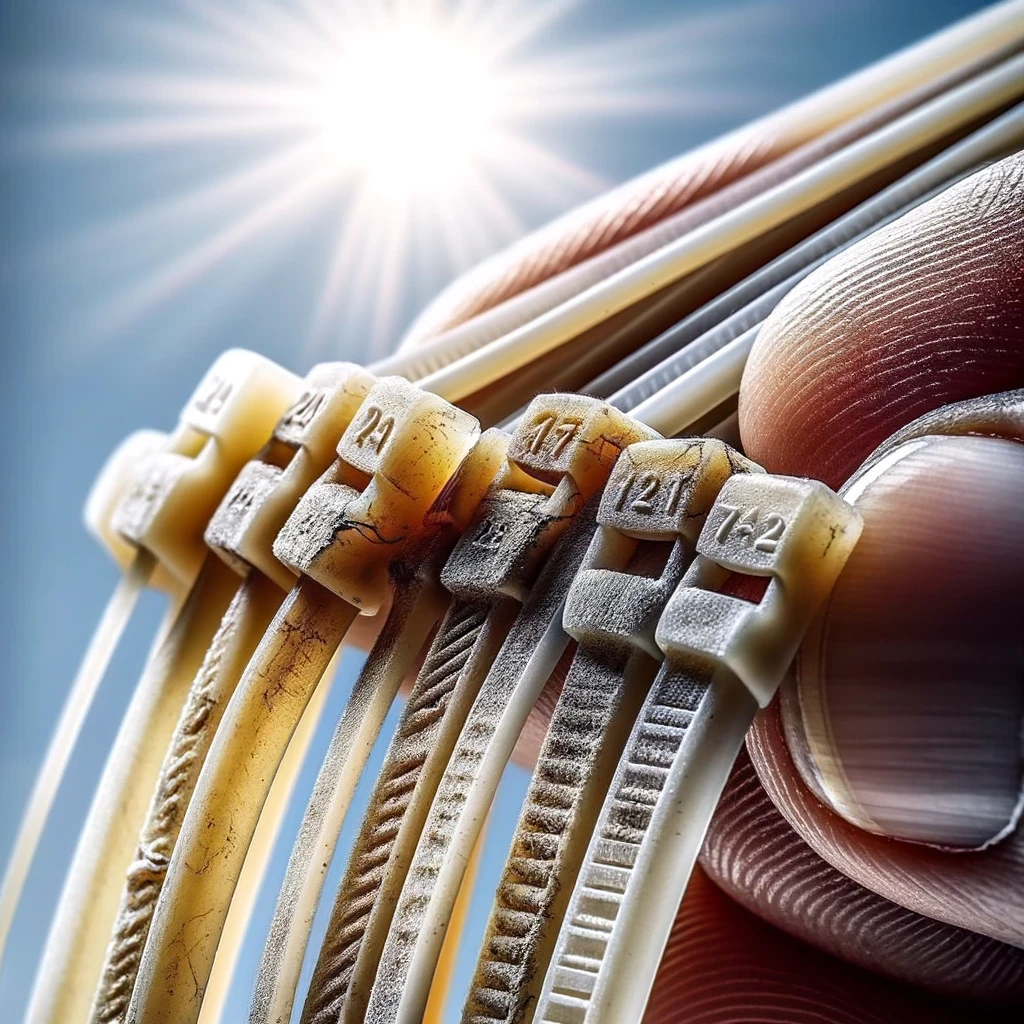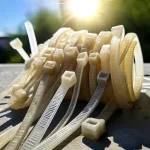The Impact of Long-Term Sun Exposure on Nylon Cable Ties
Nylon cable ties are a versatile fastening solution, but long-term sun exposure can lead to degradation and reduced performance. This article explores the effects of UV radiation on nylon cable ties and provides strategies to minimize the impact.
Nylon cable ties are a versatile and widely used fastening solution across various industries. Their durability and strength make them ideal for securing wires, cables, and other objects in both indoor and outdoor settings.
However, when exposed to the elements, particularly long-term sun exposure, nylon cable ties can experience degradation and loss of performance. In this article, we'll explore how prolonged sun exposure affects these essential fasteners and what you can do to mitigate the impact.
Understanding the Effects of UV Radiation on Nylon Cable Ties
Ultraviolet (UV) radiation from the sun can have a significant impact on the longevity and effectiveness of nylon cable ties. When exposed to UV light for extended periods, the molecular structure of nylon begins to break down, leading to a process known as photodegradation.
This degradation manifests in several ways, including discoloration, brittleness, and reduced tensile strength. As the nylon material weakens, cable ties become more susceptible to failure, potentially compromising the security of the fastened objects.
Factors Influencing the Rate of Degradation
Several factors can influence the rate at which nylon zip ties degrade when exposed to sunlight. These include:
Intensity and Duration of Sun Exposure
The more intense the UV radiation and the longer the exposure, the faster the degradation process occurs. Zip ties used in areas with high levels of direct sunlight, such as outdoor installations or near windows, are more prone to rapid deterioration.
Color and Additives
The color of the nylon zip ties can also play a role in their resistance to UV damage. Darker colors, such as black, tend to absorb more UV radiation, leading to faster degradation compared to lighter colors like white or natural nylon.
Some manufacturers incorporate UV stabilizers or other additives into their nylon zip ties to enhance their resistance to sun damage. These additives help absorb or reflect UV radiation, slowing down the degradation process.
Mitigating the Effects of Sun Exposure
To minimize the impact of long-term sun exposure on nylon zip ties, consider the following strategies:
Choose UV-Resistant Cable Ties
When selecting cable ties for outdoor or sun-exposed applications, opt for products specifically designed to withstand UV radiation. These UV-resistant cable ties often contain additives that help protect the nylon material from degradation.
Provide Shade or Covering
Whenever possible, install cable ties in areas that are shielded from direct sunlight. This can be achieved by placing them under eaves, within conduits, or behind protective covers.
Regular Inspection and Replacement
Implement a regular inspection and maintenance schedule to check the condition of nylon cable ties exposed to sunlight. Look for signs of discoloration, brittleness, or cracking. Replace any cable ties that show significant deterioration to prevent potential failures.
Maintenance Tips for Nylon Cable Ties

To ensure the longevity and performance of your nylon cable ties, consider the following maintenance tips:
Proper Installation
When installing nylon zip ties, avoid overtightening them. Excessive tension can stress the material and lead to premature failure, especially when exposed to sunlight.
Cleaning and Debris Removal
Regularly clean the surfaces around the zip ties to prevent the buildup of dirt, dust, and debris. These contaminants can trap moisture and accelerate the degradation process.
Storage and Handling
Store unused nylon zip ties in a cool, dry place away from direct sunlight. Proper storage helps preserve the material's integrity and ensures optimal performance when installed.
Wrapping Up
Long-term sun exposure can have a detrimental effect on nylon zip ties, leading to degradation, weakening, and potential failure. By understanding the impact of UV radiation and taking proactive measures, such as choosing UV-resistant products and providing shade, you can help extend the life of your zip ties and ensure the security of your fastened objects.
Stay tuned for our next blog post, and check out Cable Ties Unlimited.

